
Engaging quizzes and educational questions accompanied by answers serve as effective tools for reinforcing knowledge. Moreover, a comprehensive test on the school curriculum not only stimulates students to actively learn, but also empowers teachers to impart knowledge with heightened enthusiasm and understanding. It is widely known that children tend to embrace education more readily when it is presented in an interesting and entertaining manner.
Consequently, quizzes and tests serve as an engaging game for both adults and children alike. They provide an excellent opportunity to assess one’s knowledge and enhance intellectual faculties. Furthermore, they offer a gateway to explore scientific concepts and delve into fascinating subjects such as biology, history, geography, and more. I highly recommend participating in the space-themed quiz to expand your horizons even further.
This article includes straightforward and coherent exercises, riddles, and inquiries that have been found to be valuable for students in school. If you happen to be an educator or guardian searching for an enjoyable approach to amalgamate amusement and education for children, then these inquiries along with their corresponding answers will aid in overcoming tedious and traditional teaching techniques.
Difficult school challenges and questions with solutions
1). There are 5 daughters named Nina, Nana, Nene, Nono, and… what is the name of the fifth child?
Solution. This seemingly straightforward question suggests that the fifth child’s name should follow the pattern of the previous names, ending with “Nunu”. However, the fifth daughter’s name is actually – Maria.
2). How many months have 28 days?
Solution. Tricky question: by mentioning 28 days, it may lead one to think of February, which typically has 28 days. However, the question does not specify to name the months that have exactly 28 days. In reality, all months of the year have 28 days or more.
3). What should you add to a barrel to make it weigh less?
4). If you are in a bicycle race and you pass someone who is currently in second place, what position are you in?
Answer. At first glance, the answer seems obvious – you would be in first place. However, if you overtake the person in second, you would actually take their place and be in the second position.
5). Which is heavier: a kilogram of iron or a kilogram of feathers?
Answer: They both weigh the same, one kilogram each.
6). How many times does the letter “A” appear between zero and one hundred?
The correct answer is – zero. The question does not specify that you should count to 100 and indicate the digits where the letter “A” appears. However, there is no letter “A” in the words zero and hundred.
7). Who is the only person who never loses a soccer game?
Answer: The referee is the only person who can never lose a game, regardless of what happens in it.
8). I have two sisters: one is my aunt, and the other is not. Who is the other woman to me?
Answer: The other woman is my mother, who is my aunt’s sister.
9). How many animals did Moses put in the ark?
Answer: This is a tricky question with a hidden trap. Moses did not put any animals in the ark; it was Noah who did.
10. What was the highest mountain before Everest was discovered?
Answer: Mount Everest was the highest mountain even before its discovery. Its height remained the same. (By the way, I recommend playing the quiz with your friends, and here are the questions and answers for the quiz.)
11) What is something that can’t be heard, no matter how much it is talked about?
The response to this inquiry is the silence that remains unheard regardless of how much it is discussed.
12) Can two cookies be consumed on an empty stomach?
Response: No, because once the first cookie is eaten, the stomach is no longer empty for the second one.
13. Who possesses the ability to speak all languages in the world?
Response: An echo, as it occurs irrespective of the language spoken.
14) What question cannot be truthfully answered in the affirmative?
The answer to this question is simpler than it appears. The correct response is “Are you asleep?” If a person is capable of answering, then they are not truly asleep, and if they are asleep, they are unable to respond.
15). The child was originally born in Moscow, but relocated to St. Petersburg with his parents when he was two. The intriguing question arises: where will his teeth sprout?
The solution to this query has no correlation with the geographical location. The child’s teeth will grow within his own mouth.
16). What is necessary in order to shield five individuals from precipitation while they gather beneath a single umbrella?
The response: the absence of rainfall.
17). What personal possession do you possess that is scarcely utilized by yourself but frequently employed by others when referring to you? What could it be?
The accurate answer to this quandary is your very own name.
Simple school inquiries along with solutions for students and educators
Queries that promote the exploration of subjects like mathematics, geography, history, and logic. (I advise perusing fascinating teacher interview inquiries that will uplift your spirits)
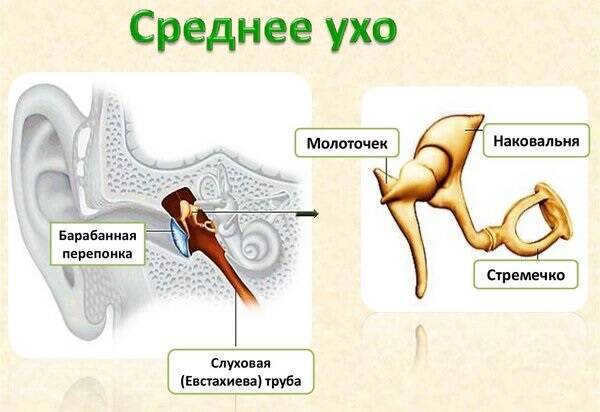
- What is the biggest river on Earth? (The answer is Amazon).
- What part of speech is the term “here”? (Answer: It is an adverbial pronoun of indication).
- Which planet is the nearest to the Sun? (The correct response is Mercury).
- What are the Ural Mountains? (They are one of the most renowned mountain ranges globally, serving as the boundary between Europe and Asia. They are primarily located in Russia).
- Which mountain is currently the tallest? (A geography inquiry, the accurate answer is Everest).
- What is the noise produced by a sheep known as? (Answer: bleating).
- At what temperature does water solidify, boil, and vaporize? (Water transitions from liquid to solid and vice versa at 0 degrees Celsius, while its boiling point is 100 degrees Celsius).
- Who is the most famous character created by Miguel de Cervantes? (Answer: Don Quixote, a renowned figure in foreign literature, often studied in school curricula).
- Can you define a prime number? (Answer: Prime numbers are natural numbers that can only be divided evenly by one and themselves).
- Which country has the highest population in the world? (The correct answer is China, a nation with a massive population).
- What is the meaning of the phrase “two words are synonymous”? (It signifies that the two words have similar meanings but differ in spelling and pronunciation).
- What are the three bones in the ear that amplify sound before it reaches the cochlea? (These bones, known as the malleus, incus, and stapes, are located in the inner ear and help transmit sound waves to the cochlea).
- How many kilograms make up a ton? (One ton is equivalent to one thousand kilograms).
- Who is the artist behind the famous Mona Lisa painting? (The ingenious Leonardo da Vinci is the answer to this question).
- How do plants convert sunlight into energy? (The process responsible for this is called photosynthesis, wherein plants utilize light captured by their leaves for their metabolic activities).
- I possess a total of 25 apples and decide to give away 25% of them to my closest friend. How many apples did I give away? (In response to this query, I presented my friend with five apples).
- What field of study focuses on the examination of celestial bodies such as stars? (The answer is astronomy, which should not be confused with astrology, a pseudoscience. (We have compiled a collection of insightful quotes about science and technology that we recommend you peruse).
- Which reptile holds the title for being the largest in the world? (The impressive Komodo dragon claims this distinction, residing on certain Indonesian islands and weighing up to 70 kg).
- What is the name of the ocean that surrounds Madagascar? (Indian Ocean).
- Which country has the second largest area in the world? (Canada, with Russia being the first in terms of area).
- What was the former capital of the Urals before the collapse of the USSR and what is it called now? (Answer: Sverdlovsk until 1991, now known as Yekaterinburg)
- In which mountain range is Mount Everest located? (Answer: Himalayas)
- Which ocean is situated between Africa, Australia, and southern Asia? (Answer: Indian Ocean)
- How many oceans are there in the world? (Answer: There are 5 oceans since 2000: Atlantic, Indian, Pacific, Southern, and Arctic).
- What are the names of the two longest rivers in the world? (The Amazon and the Nile.)
- In which continent is the South Pole situated? (Antarctica)
- What is the name of the invisible line that goes through the center of the Earth? (Equator)
- On which continent can Russia and Ukraine be found? (Eurasia and Eastern Europe)
- Which major river flows through London? (Answer: the Thames)
- In which country is the sphinx located? (Egypt)
- What body of water separates Europe and Africa? (Answer: Mediterranean Sea)
- Which country experiences the largest difference between the highest and lowest temperatures? (Answer: Russia)
- Which country has the highest population density in Europe? (Answer: Germany) (Read more interesting facts about European countries).
- Which Australian state is an island? (Tasmania Island)
- What are the names of the imaginary lines that run horizontally and vertically around the Earth? (Answer: latitude and longitude).
- Which is larger: Everest or the Mariana Trench? (Answer: the Mariana Trench)
- Which European country is closest to the continent of Africa? (Spain.)
- The United Kingdom of Great Britain is composed of England, Scotland, Wales, and what other region? (Northern Ireland)
- Is Russia located in the northern or southern hemisphere? (Northern Hemisphere)
- Which country has the lowest population density? (Answer: Mongolia)
- Can you name all seven African countries that begin with the letter M? (Answer: Madagascar, Malawi, Mali, Mauritania, Mauritius, Morocco, Mozambique).
- The Republic of Kiribati is a unique nation that can be found on all four hemispheres of the earth.
Geography test with answers
Test Your School Knowledge: 10 Questions on the School Curriculum
School biology questions with multiple choice answers
If you are getting ready for a school exam or just want to test your knowledge, try answering these 10 biology questions that will capture your attention and enhance your mental acuity.
Question 1: What is the name of the green pigment found in plant cells?
Answer choices: chlorophyll / carotenoids / anthocyanins
Correct answer: chlorophyll
Question 2: Which organ grinds the food that travels from the mouth through the esophagus?
Answer choices: liver / stomach / kidney / small intestine
Correct answer: stomach (I suggest reading fascinating facts about the human body).
Question 3. What is a component of a plant cell that is not found in an animal cell?
Answer options: nucleus / mitochondria / cell wall / cell membrane
Answer: cell wall
Question 4. What is the role of ribosomes in a cell?
Answer options: store waste / produce new proteins / break down food
The correct answer is.: produce new proteins
Question 5. What does the endocrine system generate?
Options: hormones / sex cells / DNA / blood cells.
Answer: hormones
Question 6. What is a plant that grows on another plant without causing harm to the host called?
Options: parasite / epiphyte / saprophyte / predator / hermaphrodite
Question 7. The breakdown of proteins results in:
Options: oxygen / carbon dioxide / energy / amino acids / carbon dioxide
Answer: Amino acids are the final product of protein breakdown.
Question 8. What structure connects two bones to form a joint?
Options: cartilage / ligament / muscle / tendon
Answer: Ligament
Question 9. In which environment would you find a plant called xerophyte?
Options: swamp / desert / ocean / tundra / forest
Correct answer: desert
Poll 10. What is the primary source of energy for all living organisms?
Options: water / oxygen / nitrogen / sun
Response: sun
Frequently Asked Questions about the History of Schools

If you have a keen interest in history, then these 10 history queries are tailor-made for you. They have been extracted from the world history curriculum of a renowned educational institution and seek to test your comprehension of historical events.
Question 1. When did the commencement of the First World War take place?
Choices: 1853 / 1905 / 1914 / 1812.
Answer: 1812.
Question 2. The issuance of the Magna Carta was the undertaking of the monarch of which nation?
Choices: France / Austria / Italy / England
Answer: by the King of England
Question 3. Who is the Roman emperor responsible for constructing a massive wall across North Britain in 122 AD?
Options: Marcus Aurelius / Hadrian / Nero / Octavian Augustus
Answer: The Roman emperor who built the wall is Hadrian.
Question 4. Which individual wrote the document known as the 95 theses?
Options: Martin Luther / St. Augustine / Henry David Thoreau / Voltaire
Answer: The author of the 95 theses is Martin Luther.
Question 5. Who among the famous conquerors of the 5th century AD was referred to as the “Scourge of God”?
Options: Hannibal / Genghis Khan / William the Conqueror / Attila
Answer: The conqueror known as the “Scourge of God” is Attila, the leader of the Huns.
Question 6. Which two nations engaged in a 100-year war with each other?
Options: Turkey and Austria / England and France / Palestine and Israel / Germany and Russia
Answer: The 100 years war was fought between England and France
Question 7. French styles of art, culture, manners and customs became the standard of European taste as a result of the reign of which king?
Options: Henry IV / Louis XIV / Louis XIII / Francis I
Correct answerLouis XIV
Question 8. Who baptized Kievan Rus?
Answer options: Vladimir the Great / Alexander I / Catherine II / Nicholas II
Answer: Vladimir the Great
Question 9. Where did the Aegean art originate?
Options: China / Egypt / Greece / Israel
Answer: Greece
Choices: Carthage / Egypt / Macedonia / Gaul / Greece.
Solution: After the conquest of Gaul.
Questions for students from different fields
- Which character’s nose grew longer every time he told a lie? (Pinocchio)
- What fruit do students traditionally give to teachers? (Apple)
- What do caterpillars transform into? (Butterflies)
- What is used to write on the board? (Chalk)
- Which cat is believed to bring bad luck? (Black cat)
- Which land animal holds the title for being the fastest? (Cheetah)
- How many sides does a triangle have? (Three sides)
- What is the largest mammal in the world? (Blue whale)
- Why do objects fall when dropped? (Because of gravity)
- What is the tallest animal on Earth? (Giraffe)
- What is the name for a scientist who specializes in the study of rocks? (Geologist)
- Can you identify the two planets in our solar system that begin with the letter M? (Mars and Mercury)
- In which country were the Olympic Games first created? (Greece)
- Which famous ocean liner sank on its inaugural voyage in 1912? (Titanic)
- Which book features characters in need of wit, heart, and courage? (The Wizard of Oz)
- What is the term for the imaginary line that connects the north and south poles? (Meridian)
- From which tree are prunes derived? (Plum tree)
- What is the hardest naturally occurring substance? (Diamond)
- Can you add a single mathematical symbol to the numbers 555555 in order to make 500? (Answer: 555-55 = 500)
- How many sides does a hexagon possess? (Six)
- How many strings does a violin typically have? (Four)
- What is the name for an animal that only consumes plants? (Herbivore)
- When did World War II come to an end? (1945)
- What is the term for the organ responsible for pumping blood throughout the body? (Heart)
- How many hours are in a span of two days? (48 hours)
- In which country did Joan of Arc lead an army? (France)
- How many teeth should an adult have, including wisdom teeth? (32 teeth)
- Which planet in our solar system is the largest? (Jupiter)
- Who is the artist behind the masterpiece known as the Mona Lisa? (Leonardo da Vinci)
- How many days are in the month of June? (30 days)
- What subject does a botanist specialize in? (Plants)
- Which planet is the third one from the sun? (Earth)
- What does a carnivore primarily consume? (Meat)
- Which chess piece has the ability to move diagonally? (Elephant)
- What is the species of the Komodo dragon? (Varanus lizard)
- What is the title given to someone who studies the stars? (Astronomer)
- Which African nation was governed by Nelson Mandela? (South Africa)
- What are the colors of the five Olympic rings? (Blue, black, green, red and yellow)
- What is the transformation of tadpoles? (Frogs)
- Which ocean is the largest on Earth? (Pacific Ocean)
- How many planets are present in the solar system? (8 planets)
- Which planet is nearest to the sun? (Mercury)
- Which planet possesses a ring composed of rock and ice? (Saturn)
- Is it possible for an ostrich to fly? (No)
- What is the molten substance that flows from a volcano? (Lava)
School program questions to test your knowledge
Question 1: Which bird species resides in a rookery?
Answer: penguin
Question 2: What is the primary food source for penguins?
Answer: fish
Question 3: Where can the smallest bone in the human body be found?
a) In the ear
b) In the foot
c) In the nose
Answer: In the ear
Question 4: What is the largest desert on Earth?
a) Sahara
b) Gobi
c) Arctic
Answer: Sahara
Question 5: What was the given name of the composer Beethoven?
a) Ludwig
b) Amadeus
c) Heinrich
Answer: Ludwig
Question 6: In which country is the renowned Louvre museum located?
a) France
b) Italy
c) Spain
Answer: France
Question 7. What is the total number of kidneys that a healthy individual possesses?
Answer: An individual in good health has two kidneys.
Question 8: Which avian species is responsible for laying the largest eggs?
Answer: The ostrich is known for laying the largest eggs.
Question 9. Can you identify the title bestowed upon the wife of a duke?
a) Lady
b) Duchess
c) Princess
Answer: The correct answer is b) Duchess.
Question 10: Suppose you throw a red stone into the black sea. What will happen to the stone?
Answer: The stone will become wet.
Question 11: What natural phenomenon consistently falls from the sky but never ascends?
Answer: Precipitation, such as rain or snow, constantly descends from the sky.
Question 12: A boat containing three men overturns, yet only two of them get their hair wet. Why is this?
Answer: The third man is bald, which is why his hair does not become wet.
Question 13 : What is something that everyone requires, desires, and seeks, but never actually takes?
Answer: Advice is something that everyone needs, wants, and asks for, but rarely takes.
Question 14: What is it that gets smaller every time it takes a bath?
Answer: Soap
Question 15: In a cozy neighborhood, there was a charming pink house with one floor. Every single thing inside the house was pink, from the walls and carpets to the furniture and even the cat. Now, what color do you think the staircase was?
Answer: There were no stairs. The house had only one floor.
Final thoughts
Are you looking for ways to create a welcoming and engaging learning environment for your students, whether they are attending classes in person or online? It has been observed by numerous educators that one effective method is to incorporate interactive questions, tests, and quizzes that foster a sense of fun and positivity in the classroom.
According to the Center for Teaching Innovation at Cornell University, the use of tests and quizzes in the educational setting can bring about several benefits for students, including:
- Fostering camaraderie among students
- Preparing students for collaborative learning experiences
- Establishing a relaxed atmosphere where students feel at ease and are more inclined to actively participate in the school curriculum

Oleg is the creator of saytpozitiva.ru. He has a passion for crafting informative pieces that are designed to improve the lives of others. For over 17 years, he has dedicated himself to studying the intricacies of human psychology, personal growth, and effective conflict resolution strategies. Should you have any inquiries, feel free to reach out to Oleg at [email protected].
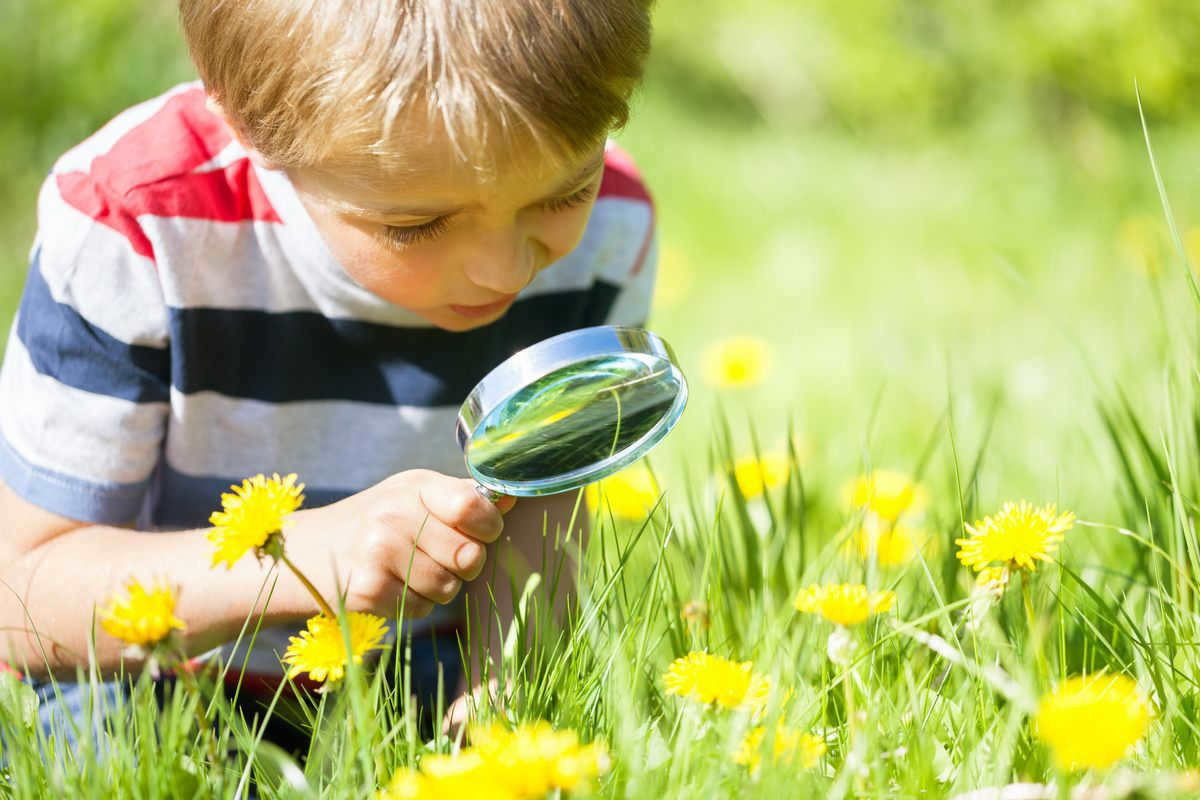
An educational quiz for kids about the environment and nature is a great way to expand their knowledge and understanding of the plant and animal kingdoms. The importance of ecology is becoming increasingly important in today’s world, and it is crucial for both children and adults to have a deep appreciation for the amazing and extraordinary world we live in. By participating in quizzes like this, children can learn how to treat the environment with care and develop responsible behavior.
The examination can be carried out in both group and individual settings. Engage parents who can acquire new knowledge alongside their offspring. The inquiries in the trivia can be employed to engage with pupils in preschool collectives, as well as students in preschool, primary, middle, and high school. A quiz concerning natural phenomena will be particularly captivating in an open-air environment, but it will also thrive in an educational institution, household, or another indoor venue. If you organize the event at school, it can be presented as a distinct lesson or an extracurricular activity or class period.

We have prepared a set of 70 questions for you, each with a correct answer option in parentheses. Feel free to take the quiz and test your knowledge in the field of nature.
You can also copy or download the question outline for free and print it out as a convenient script for your game or competition. This will allow you to address any questions that may arise.
- How many seasons are there? (4)
- According to a famous song, what does the weather never have? (Bad weather).
- What is the term for strong winds and snow drifts? (blizzard).
- Which substance can exist in three different states? (Water)
- What color are both winter and summer? (Spruce)
- What is the name of the book with a globe on its pages? (Atlas)
- How do students complete a map in a geography class? (Contour)
- What is the phenomenon called when different colors shimmer in the sky? (Northern Lights)
- What is the world’s deepest lake? (Baikal)
- What is compared to conquering the summit of Everest when talking about unattainable goals in life? (Everest)
- What poisonous element is found in a thermometer? (Mercury)
- What adjective describes animals that live with humans? (Domestic)
- What is the name of a tree with a white trunk? (Birch)
- Which tree blooms last? (Linden)
- What is the name of a beaver’s hut? (Hut)
- What is the favorite herb of cats? (Valerian)
- The name of the flower that reigns supreme in its beauty is … (rose).
- Which season has the longest night? (Winter)
- Which type of vegetation can grow as tall as a skyscraper? (Bamboo)
- Which snake boasts the longest body? (Anaconda)
- What kind of liquid can be extracted from a tree in the forest? (Birch sap)
- What instrument is used to measure the temperature of the air? (Thermometer)
- What are the two levels of heat-related danger that can be announced? (Orange, red)
- What tool can assist in determining direction? (Compass)
- A body of water in the shape of a circle that occurs naturally is known as a…(lake)
- What can unexpectedly appear in the middle of a desert? (Oasis)
- What is the name for a small, sheltered harbor? (Cove)
- What is the term for when water reaches the shore? (Tide)
- What do surfers enjoy riding on? (Waves)

Intellectual environmental quiz
Environmental concerns are pertinent to individuals of all ages nowadays, whether they are young or old. You can organize and arrange children’s knowledge with the assistance of a captivating quiz about the natural world. The objective of such a game is to summarize the existing knowledge, as well as serve as a means to absorb new information about the planet and ecology, so that children can easily remember important facts in an enjoyable manner.
- What is the term for our avian companions? (Birds)
- What is nature’s thinnest strand? (Web)
- What is the name of the set of regulations that must be followed in relation to the environment in order to avoid a fine? (Environmental Code)
- A vast area where rare animals reside is known as a… (reserve)
- Which flower brings joy to children when it blossoms? (Dandelion)
- This tree is known for its purple leaves during the autumn. Can you guess its name? (Maple, mountain ash)
- Which tree uses its fruit as projectiles? (Rowan)
- What is the essential gas that plants breathe? (Oxygen)
- The process by which plants convert carbon dioxide into oxygen is called… (photosynthesis).
- Which flower is the first to bloom after winter? (Snowdrop)
- This berry can come in various colors such as yellow, red, or black. What is it called? (Currant)
- What type of tree is often referred to as a “weeping” tree? (Willow)
- In order for a boat to continue sailing downwind, what does it need? (Sail)
- What is added to the soil to enhance fruit growth? (Fertilizer)
- What is the name of the profession that involves caring for plants? (Gardener)

Quiz for Preschoolers: Animals and Plants
Exploring the wonders of flora and fauna, understanding the dynamics of the natural world, and learning to care for the Earth are important for children and their parents. Developing a love for our local environment starts not only in school, but also outside of it. As guests on this planet, it is vital for children to contribute to protecting nature so that future generations can also appreciate its beauty. Test your knowledge of the animal and plant world by answering the following questions:
- During which season do bears hibernate? (Winter)
- Which animal shares the most similarities with humans? (Monkeys)
- Who lived before our time and was as tall as a multi-story building but is now extinct? (Dinosaurs)
- How many legs does a spider have? (8)
- Who is the ruler of the animal kingdom? (Lion)
- Which creature carries its young in a pouch? (Kangaroo)
- A spiky animal with a hundred needles is known as a… (Hedgehog).
- What type of dog did Artemon own? (Poodle)
- What predator often targets chickens? (Fox)
- Which creature possesses a horn on its face? (Rhinoceros)
- What plant is commonly recommended for treating scratches and cuts? (Plantain)
- Which herb is renowned for its bitterness in medical practice? (Wormwood)
- What materials are used to make bath brooms? (Linden, birch)
- Where can you find a list of endangered plant and animal species? (Red Book)
- This plant is a popular ingredient in soup. What is it? (Sorrel)
- Which plant is the predecessor of roses? (Rosehip)
- Which tree produces the most delicious honey collected by bees? (Linden)
- The captivating hue of azure eyes is often likened to the delicate petals of which flower? (Cornflower)
- Among the arboreal brethren, which tree boasts the longest lifespan? (Oak)
- What is the discipline dedicated to the exploration and understanding of the animal kingdom called? (Zoology)

Quiz about the natural world for students
Students and their teacher can easily tackle these questions and riddles designed for elementary and middle school grades. Some of the questions will even pique the interest of teachers. Let’s attempt to find the answers to the following 20 questions. The quiz is important as it helps consolidate knowledge and fosters a respect for nature.
- In a clear sky, what can produce a loud noise? (Thunder).
- What is the name for a small body of flowing water? (Stream)
- The place where a river merges with another body of water is called a… (estuary).
- What is the term for the edge of a cliff? (Edge)
- What is the word for the shallow part of a river where it can be crossed? (Ford).
- What is the time period between night and day? (Morning)
- What do you call the moisture that forms on grass? (Dew)
- What is the term for illegal hunters? (Poachers)
- What is a common occurrence in forests during summer? (Fires)
- In which country was flax able to be domesticated? (Egypt)
- Who is credited with introducing the potato? (Peter the Great)
- What do porcini mushrooms typically grow in? (Moss)
- What is the alternative name for the alligator pear? (Avocado)
- Which plant is often used to make a victor’s wreath? (Laurel)
- Can sakura fruit be eaten? (No)
- What is another term for sesame? (Sesame)
- What is another name for burdock? (Burdock)
- What is the name of the largest berry? (Pumpkin)
- Which tree is the most common in Russia? (Larch)

Bird Quiz
Birds are similar to our smaller siblings in many ways. It is important for children of all ages to respect nature and instead of harming birds, they should strive to expand their knowledge and appreciate these little “flyers”. Taking a quiz helps in developing a broader understanding of ecology and serves as a way to reinforce knowledge. Let’s now take a short quiz to explore some important aspects of the world of birds. Together, let’s recall everything we know!
- Who is known as the white-fronted bird? (Magpie)
- What is the largest bird? (Ostrich)
- Which bird transfers its young to other nests? (Cuckoo)
- Which bird is unable to fly? (Penguin)
- Which bird is the first to arrive after the cold season? (Rook)
- What do chickens call their offspring? (Chickens)
- Which bird possesses the most elongated wings? (Traveling albatross)
- Which bird possesses the most extended neck? (Flamingo)
- Who is considered the healer of the forest? (Woodpecker)
- “The number of times a sound is heard determines the length of one’s life.” Who is being referred to? (Cuckoo)
- Which bird has a leather pouch located beneath its beak? (Pelican)
- Which bird has a heart positioned in the front of its body? (Common Murrelet)
- What bird was historically used for delivering messages? (Pigeons)
- Who is considered the monarch of the avian species? (Eagle)
- Many people keep this small parrot as a pet. Which one?
- Which parrot is the subject of a popular cartoon? (Kesha)
- Which bird is occupied with nesting during the winter? (Nibbler)
- The title for the swiftest avian species goes to… (swift).
- Which bird did Thumbelina rescue? (Swallow)
- How does an ostrich eliminate parasites? (It buries its head in the sand)

Quiz on the topic of planet Earth
A comprehensive quiz about planet Earth can help children develop their understanding of the world. It is important for children to grasp the significance of responsibly managing the Earth’s resources. The quiz questions cover a wide range of topics and can be used for both young children and adults. The content of the questions is designed to be educational and engaging.
- What is the celestial body around which the Earth revolves? (The sun)
- What is the shape of the Earth? (Spherical)
- How many continents are there on Earth? (6)
- What is the most common racial group among Russians? (Caucasian)
- What natural phenomenon can strike a tree and cause it to fall? (Lightning)
- What is the field of study that focuses on the structure of planet Earth? (Geology)
- What percentage of the Earth is covered by water? (71)
- Approximately how many years old is our planet? (4.5 billion years)
- What is the stratosphere considered to be? (part of the atmosphere)
- How long does it take for the Earth to complete one revolution around its axis? (23 hours and 56 minutes)
- When was the first photograph of the Earth taken? (1959)
- What do both Earth and Venus have in common in terms of their surface? (Clouds)
- What is the highest point in both Russia and Europe? (Elbrus)
- In which direction does the Earth rotate? (Eastward)
- Which type of trees are most abundant in the Taiga region? (Conifers)
- Which ocean is the smallest? (Arctic Ocean)
- Which ocean is the largest? (Pacific Ocean)
- Which author extensively studied evolution and human life? (Darwin)
- The name given to the line that splits the Earth into two equal halves is the … (equator).


Distinguishing Between Astronomy and Astrology: A Description, Photo, and Table
Undoubtedly, both astronomy and astrology are connected to the vastness of space and the celestial objects that inhabit it. However, the specific factors that set them apart and establish the differences between astronomy and astrology are worth exploring.
Astrology versus Astronomy: Understanding the Distinctions

Image Description: Astrology
Astrology is a practice that originated in ancient times and is based on the belief that celestial objects and their positions have an influence on the character, fate, and events in the lives of individuals and nations. Although astrology is considered a pseudoscience, it gained popularity in the Middle Ages and continues to exist in a slightly modified form in the modern era. Astrology involves the creation of birth charts, horoscopes, and predictions of future events.
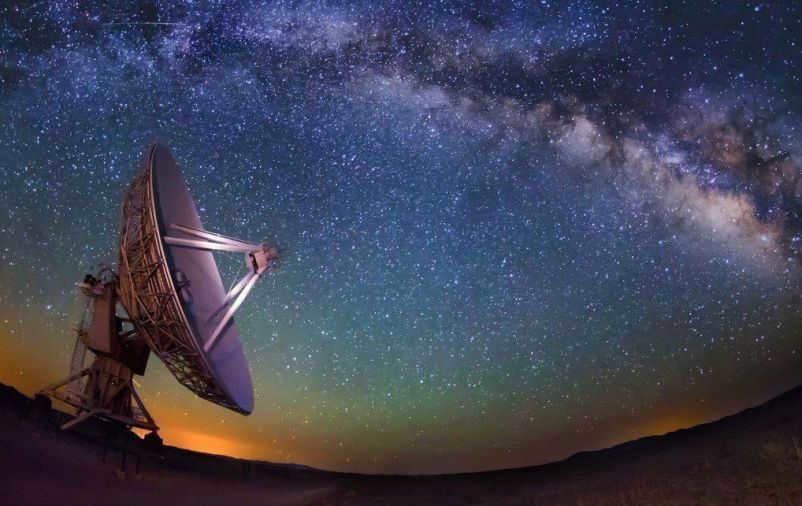
Photo: Astronomy (radio telescope)
Astronomy is the oldest natural science that, along with biology and physics, provides an understanding of the universe. It focuses on the sky, celestial bodies, their structure, movement, interaction, and influence on weather conditions. Astronomy can be divided into two main sections:
- Observational astronomy, which examines the visible coordinates of the position and motion of celestial bodies;
- Theoretical astronomy, which aims to develop methods, scientific theories, and hypotheses to study the spatial distribution of celestial bodies, the laws of their orbital motion, and changes in their positional coordinates over time.
The primary distinctions between astronomy and astrology

Image: Astrology
1. The distinction in the subjects of study
Astronomy is dedicated to exploring the stars, galaxies, planets, and other celestial bodies. It is a scientific discipline that involves the observation and analysis of the physical properties and behavior of these cosmic objects.
Astronomy covers a broad range of fields, such as:
Astrophysics. It focuses on the physical properties and processes of celestial objects, including their formation, evolution, and interactions.
Natal astrology. Natal astrology explores the correlation between a person’s birthplace and time and their character traits, as well as the potential occurrence of specific life events (through the compilation of natal charts and horoscopes). While modern science categorizes natal astrology as a pseudoscience, akin to fortune-telling.
Medical astrology is one of the oldest branches of astrological studies, focusing on matters related to human health and attempting to predict the onset and nature of diseases. Paracelsus is widely regarded as an authoritative figure in the field of medical astrology.
Elective astrology is concerned with identifying the most opportune moment for an individual or society to undertake a particular action.
There are numerous other subcategories available, such as business astrology, astrometeorology, new astrology (also known as human design), and mundane astrology….
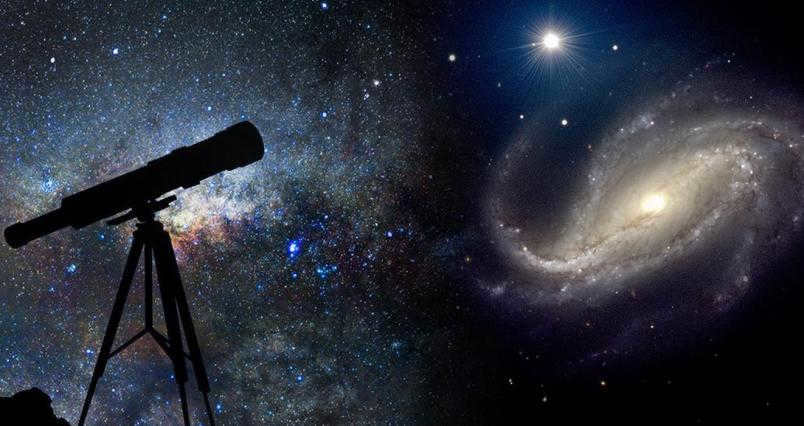
Image: Astronomy (telescope and galaxy)
Astronomy as a scientific discipline distinguishes itself from astrology primarily by focusing on the observation and study of celestial bodies in the universe. Astronomers explore the physical origins, laws of motion, developmental characteristics, chemical compositions, distances from Earth, and other celestial objects. This includes the study of stars within our own solar system, as well as other galaxies, planets and their moons, asteroids, comets, nebulae, and more. The discoveries made through astronomical research often have significant impacts on technological advancements.
2. The distinction in approaches to research
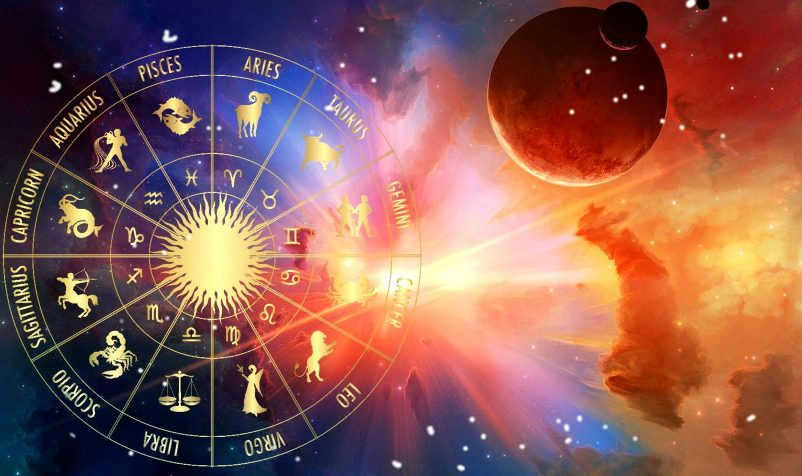
Image: Astrology, Zodiac Circle
Astrologers use the compilation and interpretation of astrological charts as their primary method of practice. The chart, also known as a horoscope, displays the positions of celestial bodies during a specific period of time. The alignment of these objects in relation to each other, as well as the zodiac signs and astrological houses, is of utmost importance. Based on this information, characteristics of individuals, events, and predictions are formulated.
- Studying celestial bodies;
- Taking measurements using specialized machinery, instruments, and tools;
- Conducting experiments in outer space.
It is important to mention that the techniques used in astronomy are closely connected to other precise and natural sciences, and they rely on various elements such as mathematical calculations and analysis, graphical representations, the principles of mechanics and physics, chemical formulas, and laboratory experiments.
3. Official recognition contrast

Image: Radio telescopes, space observatory (Astronomy)
If we examine the distinctions between astrology and astronomy through the lens of modern science, another distinction between the two becomes apparent. Astrology is regarded as a frivolous and pseudoscientific concept, often equated with esotericism, fortune-telling, and magic. Scientists argue that astrology lacks a foundation in objective facts and scientifically derived evidence.
In contrast, astronomy is an officially recognized scientific field, as its focus is on the study of real cosmic objects, processes, and phenomena.
Comparison Chart
An unfounded pseudoscientific trend lacking credible evidence.
Depends on the scientific evidence and principles of physics, mathematics, mechanics, chemistry, and other formal sciences.
Trending in this Field

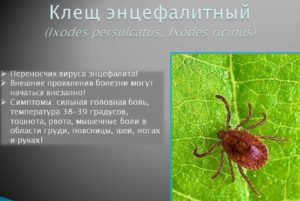
This post was written by s-zametki in the category “What it looks like”. Bookmark this page to have a permanent link.
Leave a comment Cancel reply
Search the website
Headings
Recent posts
Recent Feedback and Replies
- Does a person get reborn on Earth after death?
- Is a person reincarnated on Earth after death?
- Venya on the article Secrets of frying fish without smell and oil splashing everywhere
- Glasha on the TV series “Cargo of the Past” (2023) – plot, cast, and characters
- Eugene K. on the film “Wife for Hire” (2016) – plot, movie stills
- Marina on the TV series “Stepfather” – what will happen in the end, series content
- Chaly on the TV series “Realization-2” (2020) – content of all episodes

Astrophysics is a field of study in space science that utilizes the principles of physics and chemistry to elucidate the origins, lifespan, and demise of celestial entities, including stars, planets, galaxies, nebulae, and more. Astronomy and cosmology are two closely related disciplines to astrophysics, with overlapping boundaries.
In a broad sense, the characteristics of these disciplines can be summarized as follows:
- Astronomy focuses on measuring the positions, luminosities, motions, and other properties of cosmic objects;
- Astrophysics formulates physical theories pertaining to small and medium-sized structures within the universe;
- Cosmology encompasses the study of the largest structures and the universe as a whole.
Practically speaking, these three branches of science are tightly interconnected. If you inquire about the location of a nebula or the type of light it emits, an astronomer will likely be the foremost expert to provide an answer. Inquire about the composition and formation of a nebula, and an astrophysicist will gladly share their knowledge. If you want to understand how the data aligns with the origin of the universe, the cosmologist may have the most comprehensive insights. However, be cautious – it’s possible that two or even all three of them will start speaking simultaneously if you pose any of these questions!
Astrophysics and what it aims to achieve
Astrophysicists are dedicated to gaining a comprehensive understanding of the cosmos and our position within it. NASA outlines the objectives of astrophysics as follows – “to unravel the inner workings of the universe, explore its origins and development, and investigate the potential existence of extraterrestrial life on exoplanets,” as stated on the agency’s official website.
NASA identifies three fundamental inquiries that arise from these objectives:
While astronomy has been studied for centuries, the field of theoretical astrophysics can be credited to Isaac Newton. Prior to Newton, astronomers relied on complex mathematical models with no physical explanation to describe celestial motion. Newton’s groundbreaking work demonstrated that these mathematical models could be used to explain both the movements of celestial bodies and the trajectory of objects on Earth, such as cannonballs. This revelation led to the realization that the same physical laws govern both the heavens and the Earth.
What set Newton’s model apart from previous theories was its ability to make predictions and provide descriptions. For instance, by studying the irregularities in the orbit of Uranus, astronomers were able to predict the existence and location of a new planet, which was later confirmed and named Neptune.
Significant Achievements in Astrophysics
Observing the radiation emitted by distant objects is the primary method for studying them, making it a central focus of astrophysics. Consequently, a significant portion of astrophysics involves formulating theories that elucidate the mechanisms responsible for this radiation.
Astrophysics provides scientists with insights on how to derive the most valuable information from radiation. The initial conjectures regarding the characteristics of stars surfaced in the mid-19th century, coinciding with the advancement of spectral analysis, a nascent scientific discipline. Spectral analysis entails examining specific light frequencies that certain substances absorb and emit when heated. This analytical technique remains indispensable to the three primary branches of space sciences, serving as a vital tool for research and the evaluation of novel hypotheses.
Initially, spectroscopy offered the initial proof that stars encompassed elements that were also found on our planet. Through spectroscopy, it was revealed that specific nebulae consisted entirely of gas, while others harbored stars. This significant finding ultimately fortified the notion that certain nebulae were not nebulae at all. Instead, they were distinct galaxies!
The Origin of the Universe
During the early 1920s, astronomer Cecilia Payne made a groundbreaking discovery through the use of spectroscopy. She found that stars are primarily composed of hydrogen, at least until they reach their later stages of life. Additionally, by analyzing the spectra of stars, astrophysicists were able to calculate their velocity towards Earth. This is similar to how the pitch of a car’s sound changes depending on whether it is approaching or moving away from us, due to the Doppler shift in frequency.
In the 1930s, utilizing the Doppler shift and Einstein’s theory of general relativity, Edwin Hubble provided conclusive evidence that the universe is expanding. This expansion was also predicted by Einstein’s theory and serves as one of the fundamental principles of the Big Bang theory.
With the emergence of nuclear physics, quantum mechanics, and particle physics in the early 20th century, the possibility arose to develop theories on the impact of nuclear fusion on the life of a star. These theories provide explanations on the formation, existence, and demise of stars, effectively accounting for the observed variations in star types, spectra, luminosities, ages, and other characteristics.
The science behind celestial bodies
Astrophysics examines the properties and behaviors of stars and other celestial bodies. However, its scope is not limited to the far reaches of the universe, as it can also shed light on phenomena closer to home. According to the widely accepted Big Bang theory, the earliest stars were predominantly composed of hydrogen. Through the process of nuclear fusion, these stars transformed hydrogen atoms into a denser element known as helium. In 1957, the Burbidge astrophysics team, consisting of Geoffrey Burbidge, Margaret Burbidge, William Alfred Fowler, and Fred Hoyle, demonstrated how aging stars generate increasingly heavier elements. These elements are then passed down to subsequent generations of stars in greater quantities.





